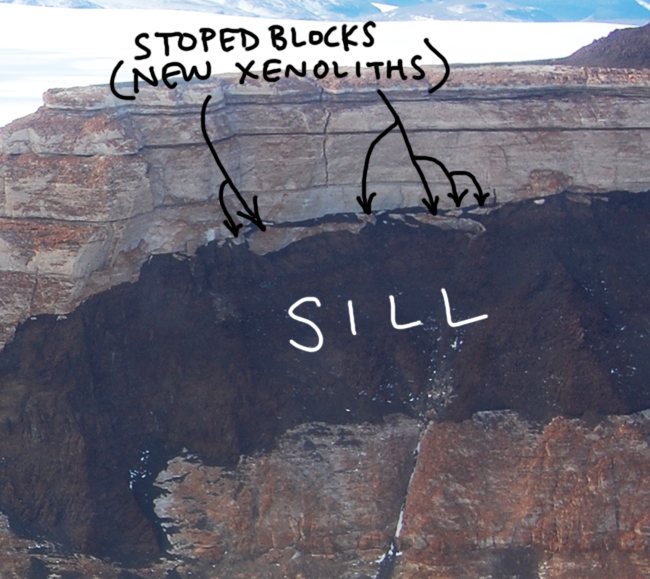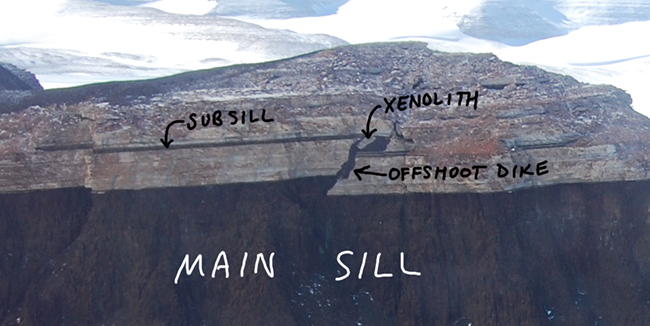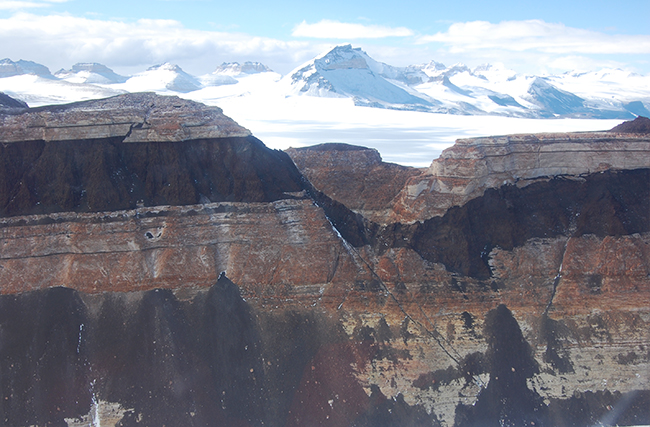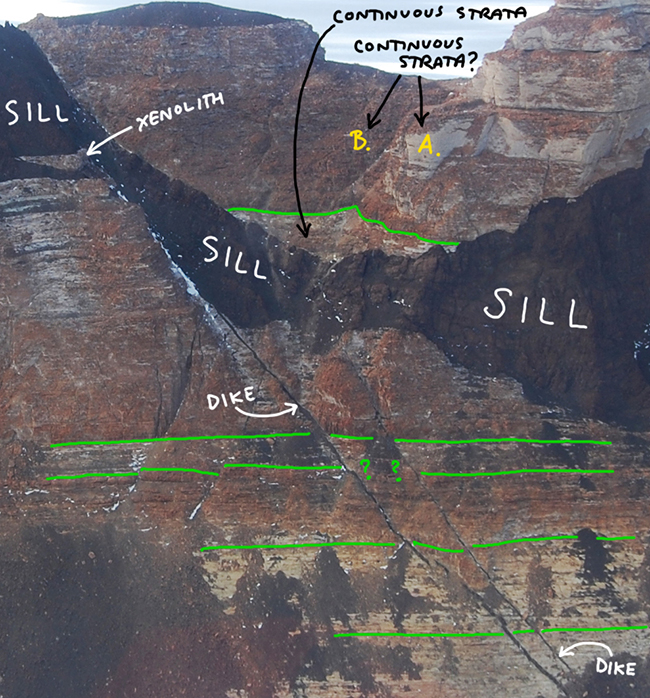7 January 2015
A mafic sill in Antarctica
Posted by Callan Bentley
My friend and colleague Lauren Michel, the King Family Fellow at the Perot Museum of Nature and Science in Dallas, Texas, sent me this image from her recent trip to Antarctica:
This is a beautiful example of a mafic igneous sill, probably of the rock known as “dolerite” (or diabase, to us Yanks). Lauren and I think it must be part of the Ferrar Large Igneous Province. (They are Jurassic in age, emplaced upon the breakup of Pangea.) The location is apparently in the Beacon Valley, near the Taylor Glacier. At first, the middle of the photo looks strongly like a fault. However, upon closer inspection, I’m not so sure.
Here, I have annotated it to show the apparent continuity of bedding:

Let’s take a closer look:
It seems like the thing that first looks like a fault is really a dike, and that the strata are more or less continuous across the field of view, with the exception of regions “A” and “B,” which don’t obviously match up, though the layers immediately below them do…
Well, is there anything else to see here? Sure there is!
There are various details of the igneous intrusion to be seen, like on the right side of the photo, where we can witness the fresh production of xenoliths along the roof of the magma chamber, where these “alien rocks” are being liberated through the process of stoping:

(I’ve previously highlighted stoping in Torres del Paine, Patagonia.)
And off to the left, we can see a subsidiary sill that’s opened off due to an offshoot dike from the main sill.

Great stuff – my students and I will see a similar sill/dike/sill relationship in the Purcell Sill, cropping out in the cirque above Grinnell Glacier in Glacier National Park, Montana, this coming summer.
Thanks for sharing, Lauren!




 Callan Bentley is Associate Professor of Geology at Piedmont Virginia Community College in Charlottesville, Virginia. He is a Fellow of the Geological Society of America. For his work on this blog, the National Association of Geoscience Teachers recognized him with the James Shea Award. He has also won the Outstanding Faculty Award from the State Council on Higher Education in Virginia, and the Biggs Award for Excellence in Geoscience Teaching from the Geoscience Education Division of the Geological Society of America. In previous years, Callan served as a contributing editor at EARTH magazine, President of the Geological Society of Washington and President the Geo2YC division of NAGT.
Callan Bentley is Associate Professor of Geology at Piedmont Virginia Community College in Charlottesville, Virginia. He is a Fellow of the Geological Society of America. For his work on this blog, the National Association of Geoscience Teachers recognized him with the James Shea Award. He has also won the Outstanding Faculty Award from the State Council on Higher Education in Virginia, and the Biggs Award for Excellence in Geoscience Teaching from the Geoscience Education Division of the Geological Society of America. In previous years, Callan served as a contributing editor at EARTH magazine, President of the Geological Society of Washington and President the Geo2YC division of NAGT.
Hello Callan and Lauren,
John O’Brien and I are writing a 2nd edition of our textbook Earth Materials. I am inquiring as to whether you would grant permission for use of a high resolution of your igneous sill image in the text. Thank you for considering this request and I look forward to hearing from you.
Cheers
Kevin Hefferan